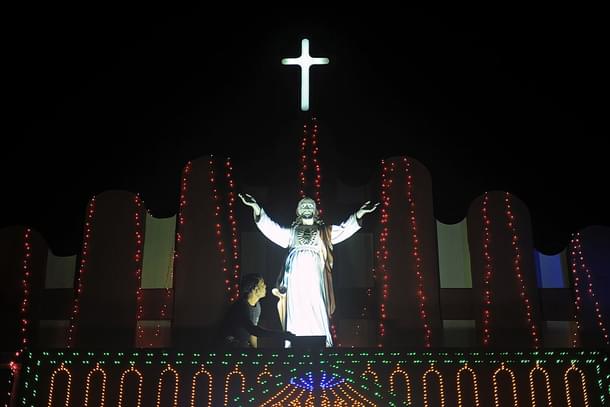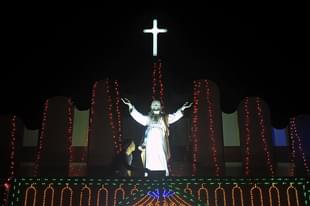Politics
Demography Watch: Christian Proselytisation Gaining Ground In Arunachal
Swarajya Staff
Nov 13, 2016, 05:52 PM | Updated 05:52 PM IST
Save & read from anywhere!
Bookmark stories for easy access on any device or the Swarajya app.


The Centre For Policy Studies (CPS) has published its thirty-second note on the Religion Data of the 2011 Census. It focuses on how Arunachal Pradesh is quickly turning into a Christian-dominated state.
Northeast India forms a major region of the Christian concentration in the country, today. Of the 2.78 crore Christians counted in 2011, 78 lakh are in the Northeast (including Assam). This is the largest concentration of Christians in India after the coastal region stretching from southern Tamil Nadu and Kerala to coastal Karnataka, Goa and Maharashtra.
This expansion has continued unabated since 1951. The tribal populations of Mizoram, Manipur and Nagaland have now become almost entirely Christian.
Meanwhile, this note highlights how Christian penetration in Arunachal Pradesh—a state that had largely escaped Christian proselytisation until recently—has made significant inroads, targeting the state’s tribal population.
Discussion of the individual tribes of Arunachal Pradesh is highly complicated because of the great multiplicity of tribes listed in the census tabulations.
In 2011, the census lists as many as 105 individual tribes in Arunachal Pradesh; the number was 100 in 2001. This numerousness of the tribes counted in the state has become possible because of the ambiguous language of the Constitutional order listing the tribes to be included in the schedule. The order names only 16 tribes, but says that ‘all tribes of the state including’ these 16 would be part of the schedule. This has made the list open-ended.
Many of the tribes listed in the census are divisions and sub-divisions of the same tribe. For example, there are 29 divisions of Adi and 28 of Tangsa listed in census 2011. These divisions and sub-divisions do not seem to be exclusive or fixed. The data is comparable over time only when we combine the numbers for the various divisions of a tribe.
CPS has tried to group the numerous tribes into a few groups that are ethnically distinct and inhabit distinct geographical regions of the state. The religion data for these groups indicates that some of the major tribal groups have been fully or largely converted to Christianity, while many of the Buddhist and Hindu tribes have continued to retain their identity.
The most numerous and influential group comprising the Nyishi, Nissi and Nishang, inhabiting mainly East Kameng, Lower Subansiri and Papum Pare districts, has now become 63 per cent Christian. In 2001, Christians had a share of 41.5 per cent in this group.
The second most numerous group of the Adi, inhabiting Upper Subansiri and Upper, West and East Siang, is now 28 per cent Christian; in 1991, only about 12 per cent of the Adi were Christian. The smaller communities of the Aka, the Apatani and the Tagin also have acquired considerable Christian presence in the recent past.
In the east, the Tangsa of Changlang are now 59 per cent Christian, the Wancho of Tirap are more than 95 per cent Christian and the Nocte are 67 per cent Christian. These communities were largely Hindu or other religions and persuasions till recently.
The Monpas of Tawang and West Kameng and the Khamptis of Lohit-Changlang region remain committed to Buddhism and the Mishmis of Dibang-Lohit region to Hinduism.
Thus Christian proselytisation has now come to dominate many of the major regions and tribes of Arunachal Pradesh. Most of the traditional religious practices — including the widely prevalent Doni Polo — are now in danger of being lost.
Read the full note and analysis here.





